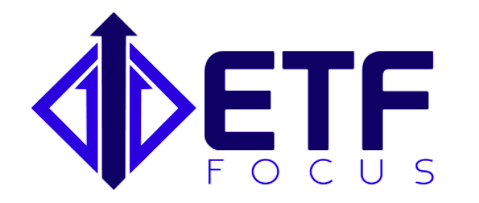For investors using equities to generate income in their portfolios, there’s often too much emphasis placed on a stock’s dividend yield. Yield is a function of price, and high yields could simply be the result of a stock price that has dropped due to company performance issues. If prospects remain poor, that dividend yield could be at risk of being cut.
Take, for instance, the SPDR S&P 500 High Dividend ETF (SPYD). It yields nearly 4% right now and focuses on the highest yielders from the S&P 500. Sounds like a good enough deal, but take a deeper dive and look at the top 10 holdings.
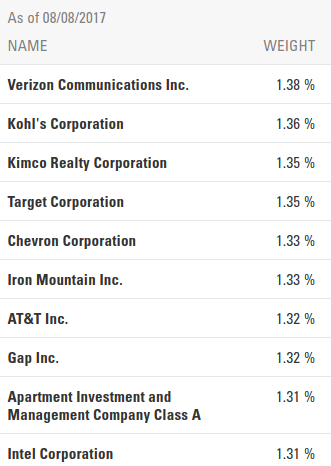
You could find some significant headwinds with many of these names. Investors love the dividend yields of AT&T (T) and Verizon (VZ) but struggle to love the companies. AT&T still needs DOJ approval of its acquisition of Time Warner (TWX) and, even if it is approved, represents a major risk. Verizon spent billions on Yahoo and AOL and will likely see mixed results, and needed to switch to less profitable unlimited plans to compete with the likes of Sprint (S) and T-Mobile (TMUS). Kohl’s (KSS), Target (TGT) and Gap (GPS) are all part of the beleaguered retail sector that continues to get hammered. That 4% yield is attractive but it hasn’t done shareholders much good this year. The fund is up just 3% this year compared to an 11% return for the S&P 500. In the context of dividend ETFs (or any investment really), total return matters.
Which is why a fund like the WisdomTree U.S. Quality Dividend Growth ETF (DGRW) is such a nice option for investors. This ETF ranks its components according to three factors: long-term earnings growth, historical three-year average return on equity and historical three-year average return on assets. It will pull out the top 300 names using this methodology and then weight them according to the total amount of cash dividends paid, not dividend yield. What you’re left with is a portfolio that tilts towards large-cap dividend payers and includes companies that operate efficiently and generate a lot of cash.
While the fund doesn’t specifically target dividend aristocrats, it reads like it does.
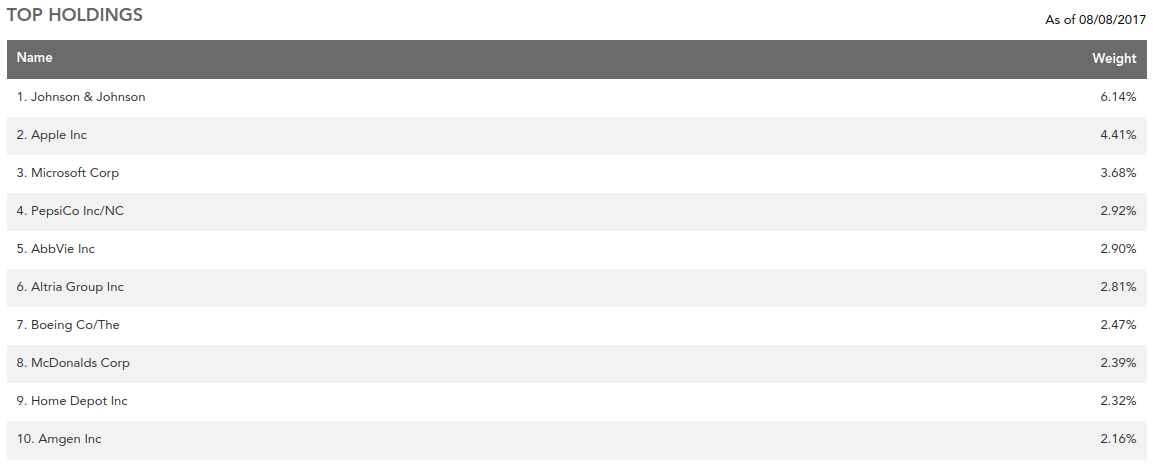
Johnson & Johnson (JNJ), PepsiCo (PEP), AbbVie (ABBV) and McDonald’s (MCD) all have 40+ year dividend histories. Altria (MO) is essentially an aristocrat. Apple (AAPL) and Microsoft (MSFT) are more recent dividend payers but generate billions in cash. These types of cash-rich companies with sturdy dividends tend to outperform most segments of the markets over time.
Highly efficient companies and the ETFs that target them make for solid core holdings. Companies with high ROEs and ROAs have the flexibility to invest in available growth opportunities, improve the infrastructure of the business and reward shareholders with dividend growth and share buybacks. Moreover, these companies can potentially shield investors from market downturns due to their demonstrated ability to maximize returns through various economic cycles.
DGRW through its selection process produces a portfolio backed by solid fundamentals.
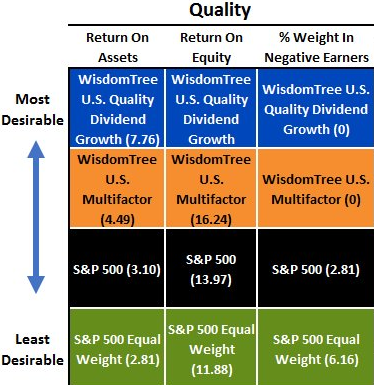
Investors may initially get hung up on the fund’s 1.9% dividend yield. While that number is on par with the S&P 500, it typically doesn’t generate the interest that funds yielding 3% or more, such as the iShares Core High Dividend ETF (HDV) and the Vanguard High Dividend ETF (VYM), do. On a total return basis, though, DGRW can hang with the best in the business. Since its inception in 2013, the fund has outperformed all of the biggest dividend ETFs in the marketplace.
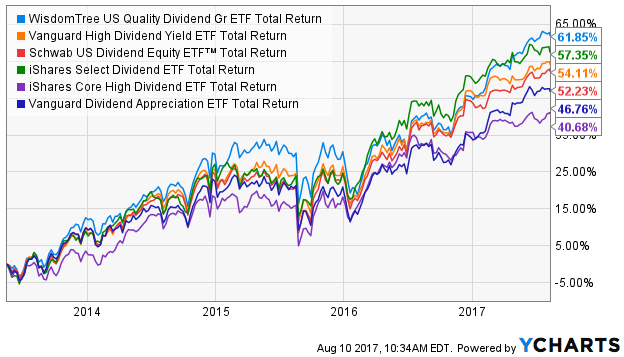
I’ve long been a proponent of quality dividend ETFs despite their modest yields. The WisdomTree U.S. Quality Dividend Growth ETF earns a 5-star rating from Morningstar, and deservedly so. Its ability to target companies generating strong profits, lots of cash and efficient business models have served investors very well over the years.
If you enjoyed reading this article, please be sure to share it below and subscribe to the site so that you don't miss any updates or new stuff! As always, thank you for taking the time to read!
